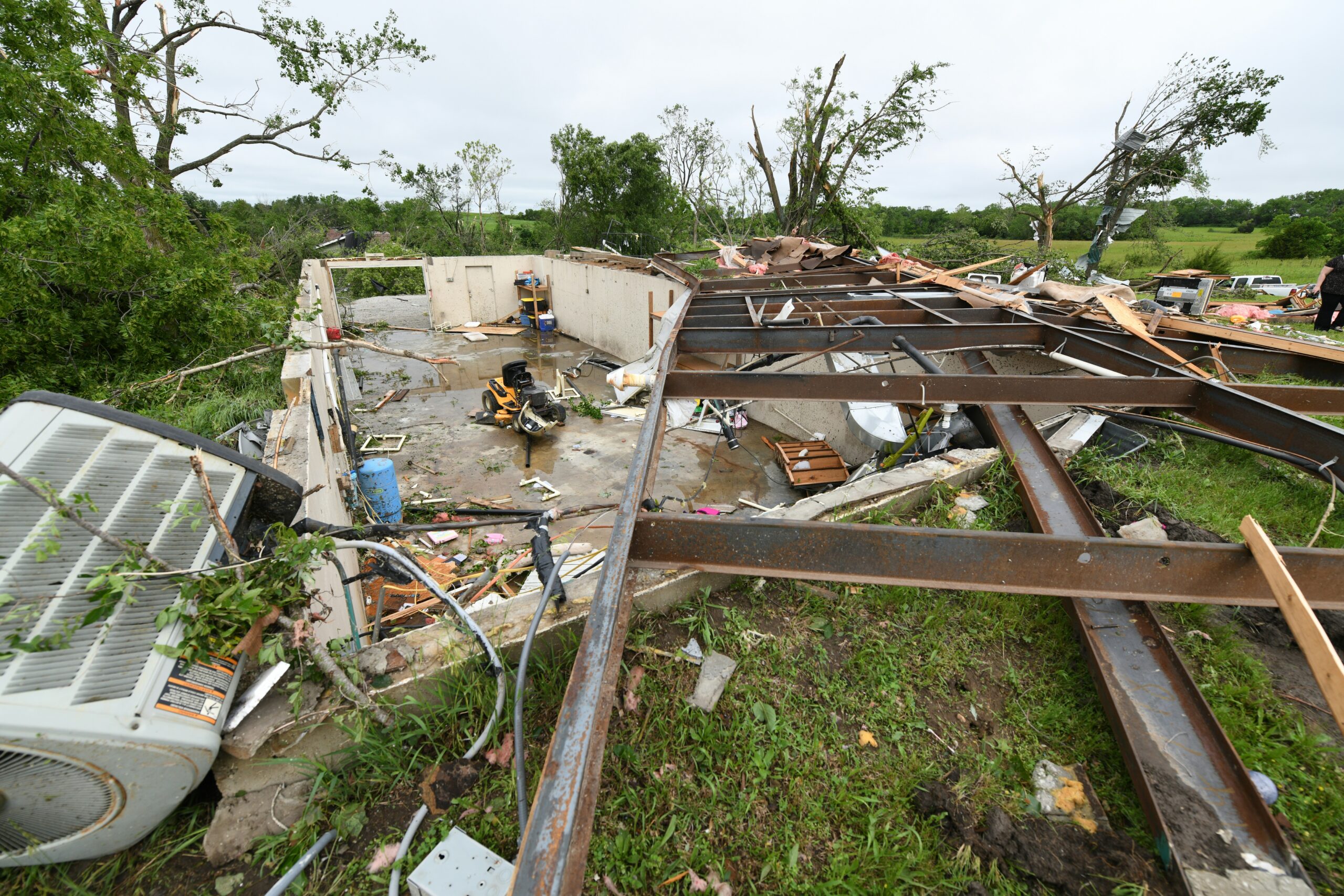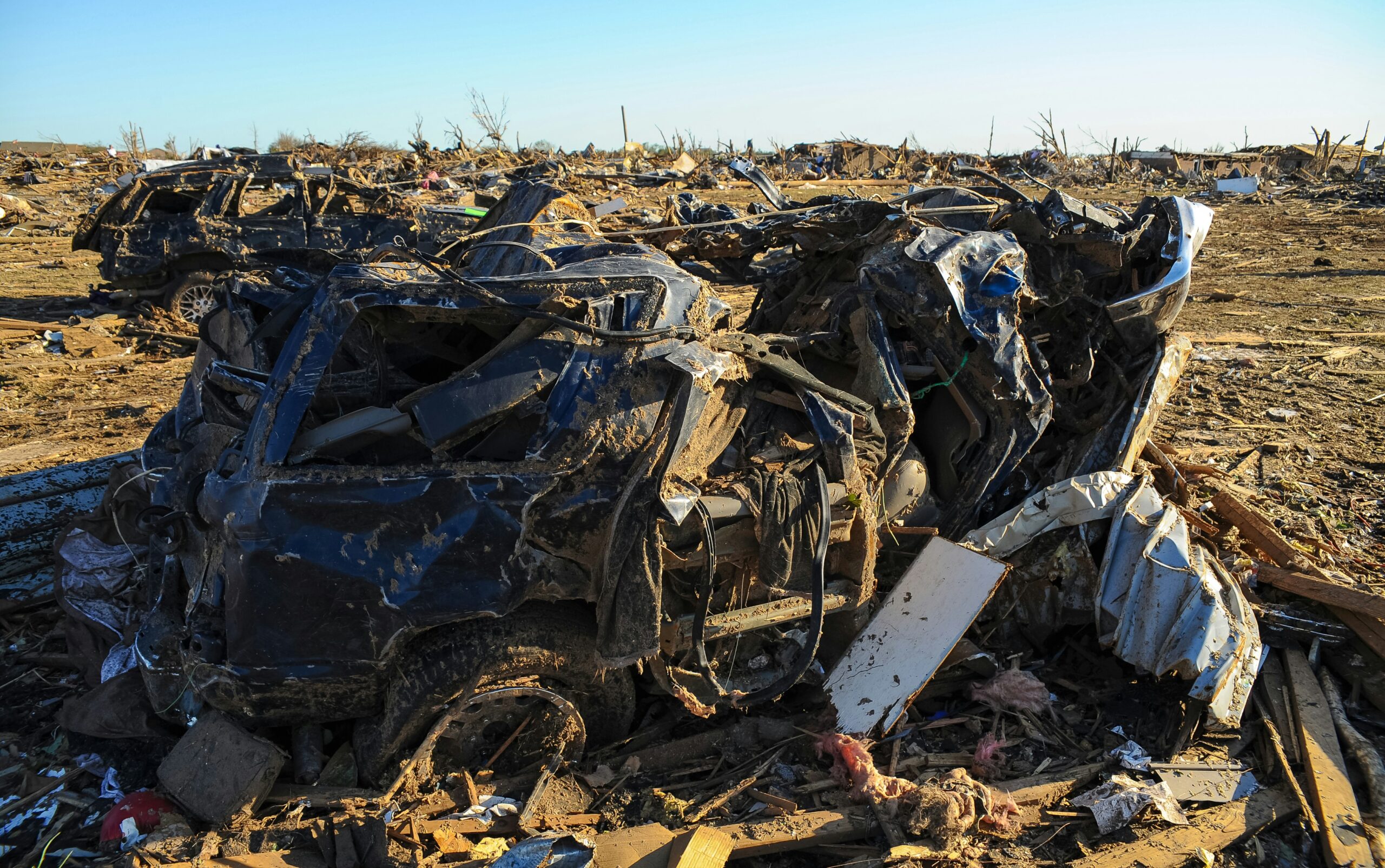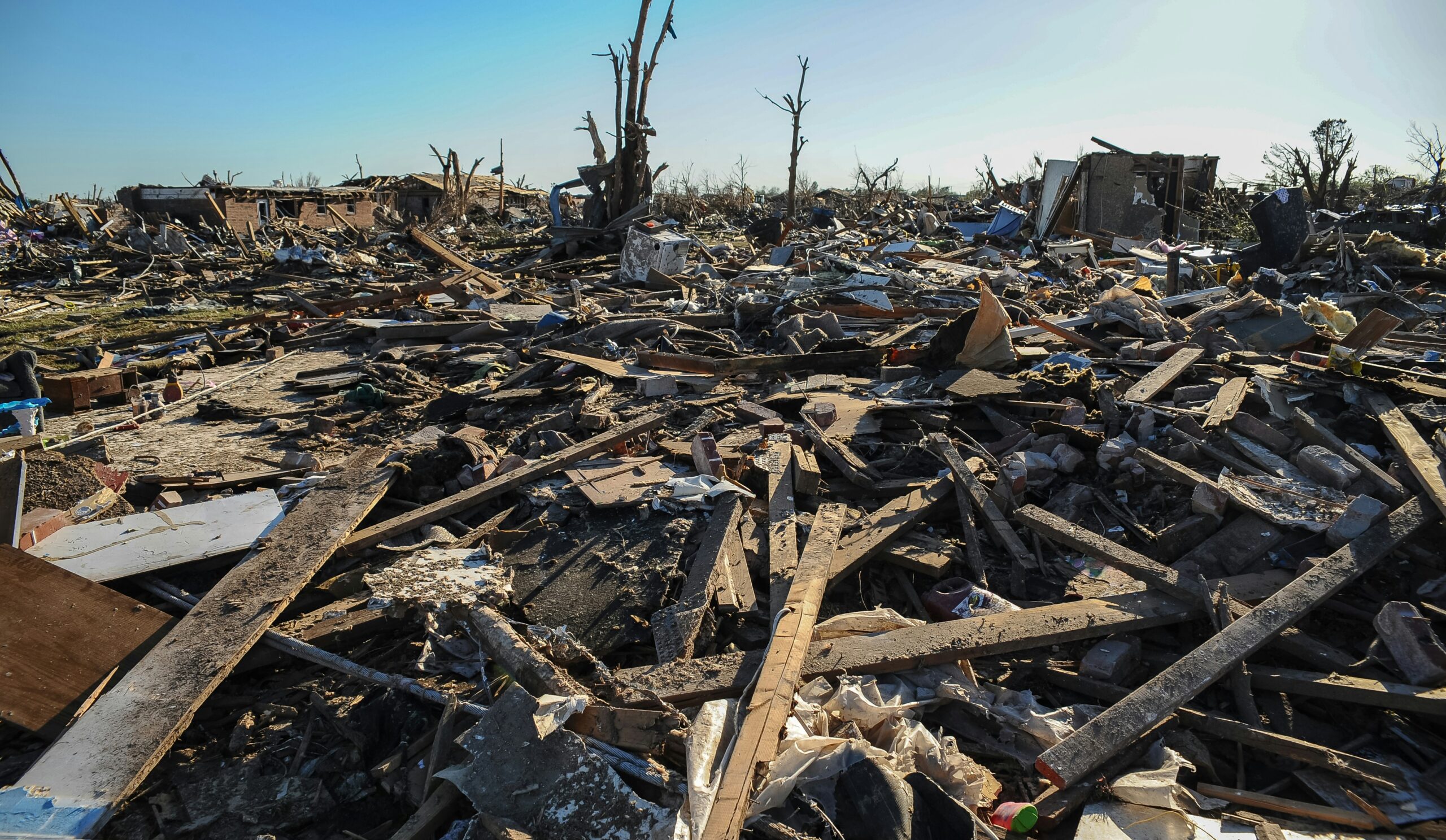Living in areas prone to landslides or avalanches can be challenging, but with proper preparation, you can mitigate the risks and ensure your safety. In this article, we will explore essential steps you can take to prepare yourself and your property for the possibility of a landslide or avalanche. From understanding warning signs to creating an emergency plan, you’ll gain valuable insights that will help you be ready for any potential natural disaster. Don’t let fear overwhelm you; instead, let’s embrace knowledge and preparedness together.
Landslide and Avalanche Preparedness
Landslides and avalanches can be devastating natural disasters, causing significant damage to both property and human lives. Understanding the risks associated with these events and taking proactive measures to prepare yourself and your family can make a significant difference in ensuring safety. In this comprehensive guide, we will explore the different aspects of landslide and avalanche preparedness, including understanding these phenomena, recognizing warning signs, developing emergency plans, securing your property, preparing an emergency kit, and seeking professional advice. By following these guidelines, you can be better equipped to face the challenges posed by landslides and avalanches.
Understanding Landslides and Avalanches
Before diving into the elements of preparedness, it is crucial to gain a solid understanding of landslides and avalanches. Landslides occur when a mass of rock, debris, or earth moves down a slope due to gravity, while avalanches refer specifically to the rapid movement of snow, ice, or rocks down a mountain slope. These events can be triggered by factors such as heavy rainfall, seismic activity, snowmelt, or human activities like deforestation or construction.
It is also important to be aware of the different types of landslides and avalanches. Landslides can manifest as debris flows, rock falls, slump slides, or rotational slides, each with its own characteristics and potential risks. Meanwhile, avalanches can be classified into several types, including slab avalanches, loose snow avalanches, and wet snow avalanches. By understanding the specific features of these occurrences, you can better assess the risks associated with each and prepare accordingly.
In addition to understanding the characteristics and types of landslides and avalanches, conducting a risk assessment is crucial. A risk assessment helps you evaluate the likelihood and potential consequences of these events in your area. Factors to consider include the local topography, soil stability, vegetation cover, historical occurrences, and weather patterns. By assessing the risk, you can prioritize your preparedness efforts and allocate resources effectively.

Recognizing Warning Signs
Recognizing the warning signs of an impending landslide or avalanche is vital for staying safe and taking appropriate action in a timely manner. Paying close attention to physical indicators, environmental clues, and weather signs can help you identify potential hazards beforehand.
Physical indicators of a landslide may include tilting trees or poles, cracks in the ground or pavement, sinking foundations, or retaining walls separating from buildings. For avalanches, look out for recent snow loading, cracks or fractures on the snow surface, or signs of stress such as tree bending or cracking noises in the snowpack.
Environmental clues can provide valuable insights into potential landslides or avalanches. These include changes in stream flow patterns, sudden appearance of springs, or unusual seepage in the ground. In avalanche-prone areas, observing recent avalanches or avalanche debris can serve as warning signs.
Weather signs, such as heavy rainfall, rapid snowmelt, or freezing and thawing cycles, can greatly increase the likelihood of landslides and avalanches. It is important to stay informed about weather forecasts and take appropriate precautions during times of increased risk.
Preparing an Emergency Plan
Creating a thorough emergency plan is an essential component of landslide and avalanche preparedness. Being proactive and having a plan in place can significantly minimize the potential impact of these events. Consider the following steps when developing your emergency plan:
Identifying Safe Zones
Identify safe zones on your property or within your community where you can seek refuge in the event of a landslide or avalanche. These areas should be located away from potential hazards and offer sturdy protection from falling debris or snow. Examples of safe zones may include underground shelters, reinforced buildings, or elevated terrain.
Creating Escape Routes
Develop clear and well-marked escape routes that lead from high-risk areas to the identified safe zones. These routes should prioritize safety and avoid potential bottlenecks or obstacles. Maintain these paths regularly to ensure they are accessible at all times.
Establishing Meeting Points
Designate meeting points for your family or household members within the safe zones. This will facilitate regrouping and ensure that everyone is accounted for in the aftermath of a landslide or avalanche. Choose easily identifiable locations and communicate them to all family members.
Assigning Responsibilities
Assign specific responsibilities to each household member to ensure a coordinated response during an emergency. This may include tasks such as gathering essential documents, preparing the emergency kit, assisting children or elderly family members, or contacting authorities. By distributing responsibilities, you can maximize efficiency and minimize confusion during a high-stress situation.

Creating a Communication Plan
Effective communication is crucial during a landslide or avalanche event. Establishing a communication plan in advance will enable you to quickly and efficiently relay important information to your loved ones and emergency responders. Consider the following elements when creating your communication plan:
Emergency Contact List
Compile a comprehensive list of emergency contacts, including local authorities, utility providers, medical professionals, and close friends or relatives who can offer assistance. Make sure to update this list regularly and keep copies in multiple locations, including both digital and physical formats.
Establishing Communication Channels
Determine the primary communication channels you will use to relay messages during an emergency. This may include phone calls, text messages, social media platforms, or designated communication apps. Identifying reliable channels in advance will help streamline your communication efforts.
Deciding on a Safe Word
Choose a unique and easily recognizable safe word that all members of your household can use to indicate an immediate need for assistance or confirmation of safety. This word should be easy to remember and signify the urgency of the situation.
Testing Communication Methods
Regularly test your communication methods to ensure their reliability. Practice sending and receiving messages using various communication channels to identify any potential issues or limitations. This will allow you to make necessary adjustments and be confident in your ability to communicate effectively during an emergency.
Securing Your Property
Taking measures to secure your property can significantly minimize the risk of damage during a landslide or avalanche event. Consider implementing the following strategies to safeguard your property:
Landscaping Techniques
Adopt landscaping techniques that promote stability and minimize the risk of landslides. This may include terracing, slope stabilization, or the strategic planting of vegetation with strong root systems. Consult with landscape professionals or local authorities for specific recommendations suitable for your region.
Proper Drainage Systems
Ensure that your property is equipped with proper drainage systems that redirect water away from slopes and foundations. Well-maintained drainage systems can prevent excessive water accumulation, reducing the risk of landslides. Clear gutter debris regularly and inspect downspouts for any blockages.
Use of Retaining Walls or Barriers
Consider constructing retaining walls or barriers in areas prone to landslides. These structures can help stabilize slopes and hold back soil, reducing the risk of erosion. Ensure that retaining walls are professionally engineered and meet local safety standards.
Guarding Against Snow Accumulation
If you live in an avalanche-prone area, take proactive measures to guard against snow accumulation. Snow fences, snow sheds, or strategically placed barriers can help redirect or reduce the accumulation of snow, minimizing potential avalanche risks.

Preparing an Emergency Kit
Creating a well-stocked emergency kit is vital in any disaster preparedness plan. This kit should include essential supplies, documents, and specific items for potential landslide or avalanche scenarios. Consider the following items when assembling your emergency kit:
Basic Supplies
Include basic supplies such as non-perishable food, drinking water, medications, a flashlight, batteries, a portable radio, blankets, clothing, personal hygiene items, and a multipurpose tool. Ensure that your emergency kit is easily accessible and regularly check expiration dates to maintain the freshness of perishable items.
Essential Documents
Gather and protect essential documents in a waterproof and fire-resistant container. This may include identification documents, insurance policies, medical records, passports, birth certificates, and important contact information. Keeping copies of these documents in digital format can provide an additional layer of protection.
First Aid Kit
A well-equipped first aid kit is a must-have item in any emergency kit. Include bandages, adhesive tape, disinfectant, scissors, tweezers, pain relievers, antiseptic wipes, and any necessary medications specific to the needs of your household. Familiarize yourself with basic first aid practices and consider taking a first aid course for additional knowledge.
Special Considerations for Avalanches
If you live in an avalanche-prone area, consider including specialized avalanche safety equipment in your emergency kit. This may include avalanche beacons, shovels, probes, or inflatable avalanche airbags. Obtain proper training for using this equipment and ensure that it is regularly inspected and maintained.
Developing an Evacuation Plan
In the event that evacuation becomes necessary, having a well-thought-out plan can make a significant difference in ensuring a smooth and safe transition. Consider the following steps when developing your evacuation plan:
Designating Primary and Secondary Evacuation Routes
Identify primary and secondary evacuation routes that lead you away from high-risk areas. Consider alternative routes in case of road closures or blocked passages. Plan and map your routes in advance, ensuring that all members of your household are familiar with the directions.
Planning Transportation Options
Ensure that you have reliable transportation options available for evacuation. If you own a vehicle, keep it well-maintained and regularly check the fuel level. Additionally, familiarize yourself with public transportation routes and any emergency transportation services offered in your area.
Accounting for Pets and Livestock
If you have pets or livestock, include them in your evacuation plan. Identify pet-friendly shelters or accommodations in advance and make arrangements for their transportation. Prepare pet carriers, leashes, food, and any necessary medications. For livestock, ensure there is a contingency plan for their relocation or protection.
Practicing Evacuation Drills
Regularly practice evacuation drills with your household members to ensure everyone understands the procedures and can execute them swiftly. Time each evacuation drill to identify areas for improvement and establish a safe meeting point outside your home. Repeat these drills periodically to reinforce preparedness.

Preparing Your Family
Preparing your family members for the possibility of a landslide or avalanche is crucial in minimizing the potential risks. Educate and train your family through the following steps:
Educating About Landslide and Avalanche Risks
Educate your family about the risks associated with landslides and avalanches. Explain the warning signs, potential hazards, and proper response procedures. Help them understand the importance of preparedness and how their actions can contribute to their safety and the safety of others.
Teaching Safe Behaviors
Teach your family members safe behaviors to follow in the event of a landslide or avalanche. This may include staying away from steep slopes, avoiding areas prone to flooding, or seeking shelter in designated safe zones. Ensure that all family members understand and adhere to these guidelines.
Preparing Children and Elderly
Take special care to prepare children and elderly family members for potential landslide or avalanche events. Explain the risks and emergency procedures in an age-appropriate and easily understandable manner. Encourage open discussions, address any concerns, and practice drills to reinforce learning.
Practicing Sheltering-in-Place
In some situations, sheltering-in-place may be the safest option during a landslide or avalanche event. Familiarize your family members with the concept and establish guidelines for sheltering-in-place, such as finding a room on the first floor, away from windows, and reinforcing windows and doors with protective materials.
Staying Informed
Staying well-informed about the latest developments and expert advice regarding landslides and avalanches is crucial for effective preparedness. Utilize various sources to stay up-to-date, including:
- Local news sources: Monitor local news channels, websites, or radio stations for updates on weather conditions, potential risks, and emergency instructions specific to your area.
- Weather alerts: Sign up for weather alerts and notifications issued by trusted meteorological services. This will ensure you receive timely information on changing weather patterns and potential landslide or avalanche risks.
- Community networks: Participate in community preparedness programs and establish connections with neighbors. Collaborating with others can provide valuable information, support, and resources during emergencies.
- Expert advice: Seek professional advice from geological or avalanche experts to assess the unique risks present in your area. Consulting with engineers for property assessments can also provide recommendations to further secure your property.

Seeking Professional Advice
In addition to staying informed, seeking professional advice can greatly enhance your landslide and avalanche preparedness efforts. Consider the following avenues to access expert guidance:
Consulting Geological or Avalanche Experts
Consulting with geological or avalanche experts in your region can provide valuable insights into the specific risks and recommended mitigation strategies. These professionals can analyze soil conditions, slope stability, and other factors influencing your area’s susceptibility to landslides or avalanches. Their expertise will assist you in making informed decisions to protect your property and loved ones.
Contracting Engineers for Property Assessment
Engaging the services of professional engineers specializing in landslide or avalanche mitigation can provide a thorough assessment of your property’s vulnerability. These experts can identify potential weaknesses or hazards and make recommendations for structural improvements. By investing in these assessments, you can mitigate risks and fortify your property against potential catastrophes.
Engaging with Local Emergency Management Agencies
Reach out to your local emergency management agencies to inquire about available resources, programs, and support. These agencies are dedicated to fostering community resilience and can provide guidance on emergency preparedness, evacuation routes, and community response plans. Work alongside them to stay informed and actively participate in preparedness initiatives.
Participating in Community Preparedness Programs
Many communities offer preparedness programs that focus on various natural disasters, including landslides and avalanches. Take advantage of these programs to educate yourself, your family, and your neighbors. Such programs often provide training, resources, and drills to enhance preparedness at both the individual and community levels.
In conclusion, landslide and avalanche preparedness require a proactive and comprehensive approach. Understanding the nature of these disasters, recognizing warning signs, creating emergency plans, securing your property, preparing an emergency kit, and seeking professional advice are all vital steps to ensure the safety and well-being of yourself and your loved ones. By following the guidelines presented in this article and regularly reviewing and updating your preparedness measures, you can significantly reduce the potential risks associated with landslides and avalanches. Stay vigilant, stay prepared, and stay safe.

